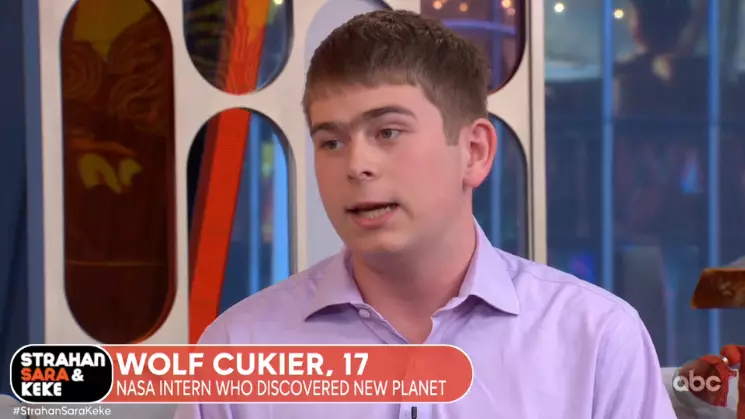
Think back to the work experience stint you did when you were younger; did you spend most of it making brews, not to be trusted with any important jobs in case you ballsed them up?
Well, be prepared to feel inadequate because this 17-year-old intern at NASA discovered a new planet on his third day. I think by the third day on my work experience I was just about to pick up the phone if it rang...

High school student Wolf Cukier (fantastic name) found the planet, which has been named TOI 1338 b, is about 1,300 light years away from the Earth.
Advert
In a statement, Cukier said: "I was looking through the data for everything the volunteers had flagged as an eclipsing binary, a system where two stars circle around each other and from our view eclipse each other every orbit.
"About three days into my internship, I saw a signal from a system called TOI 1338. At first, I thought it was a stellar eclipse, but the timing was wrong. It turned out to be a planet."
TOI 1338 b orbits two stars and is 6.9 times the size of Earth, according to NASA - and, before you get your hopes up, it's very unlikely that it can support life.
Cukier told CBS: "The planet blocked the light from those two stars, leading to a small dip in the amount of light that reached the telescope. That's what I noticed at first.
Advert
"It was like, oh... there's something here that was cool. But it's also not like there's a single moment of discovery."
The planet was caught by satellite TESS and the team used a software package called 'eleanor' to confirm that what they were seeing was legit.
The discovery was actually made last summer, but the news has only recently been published in a new study, which was co-authored by Cukier.

Study co-author Adina Feinstein explained: "Throughout all of its images, TESS is monitoring millions of stars.
Advert
"That's why our team created eleanor. It's an accessible way to download, analyze and visualize transit data. We designed it with planets in mind, but other members of the community use it to study stars, asteroids and even galaxies."
Featured Image Credit: ABCTopics: Science, World News